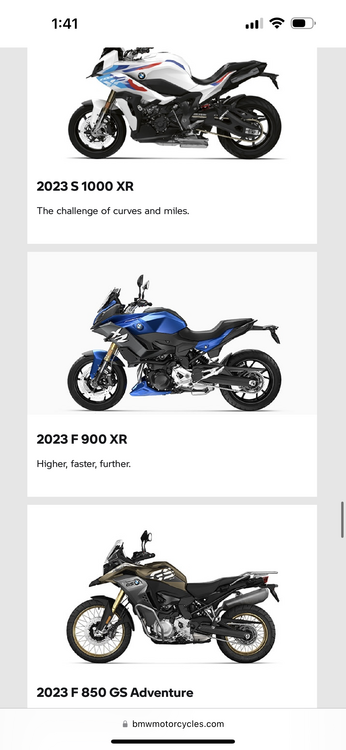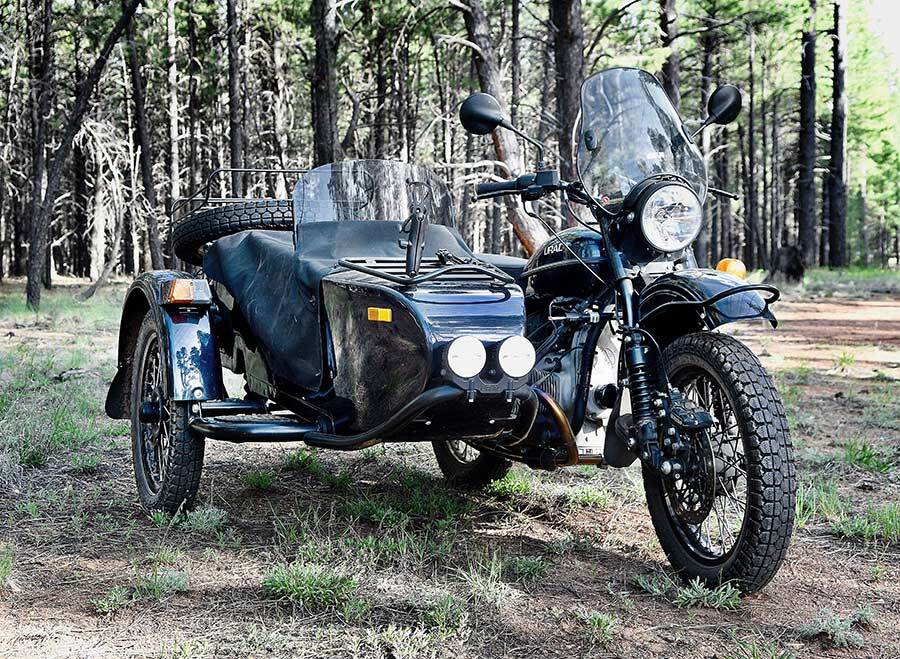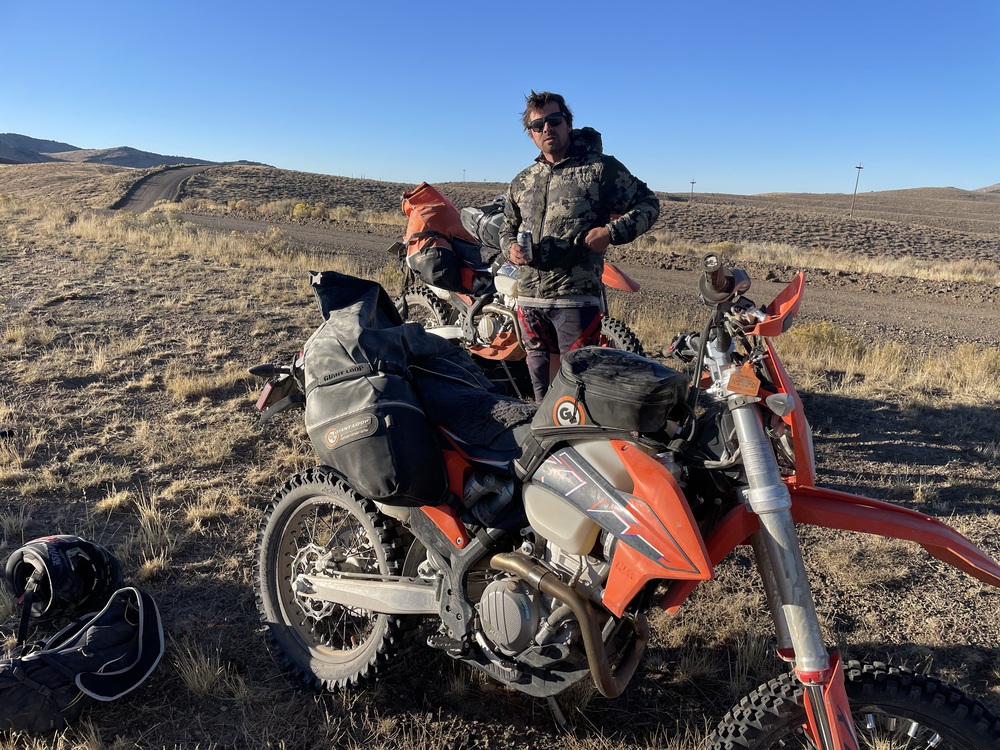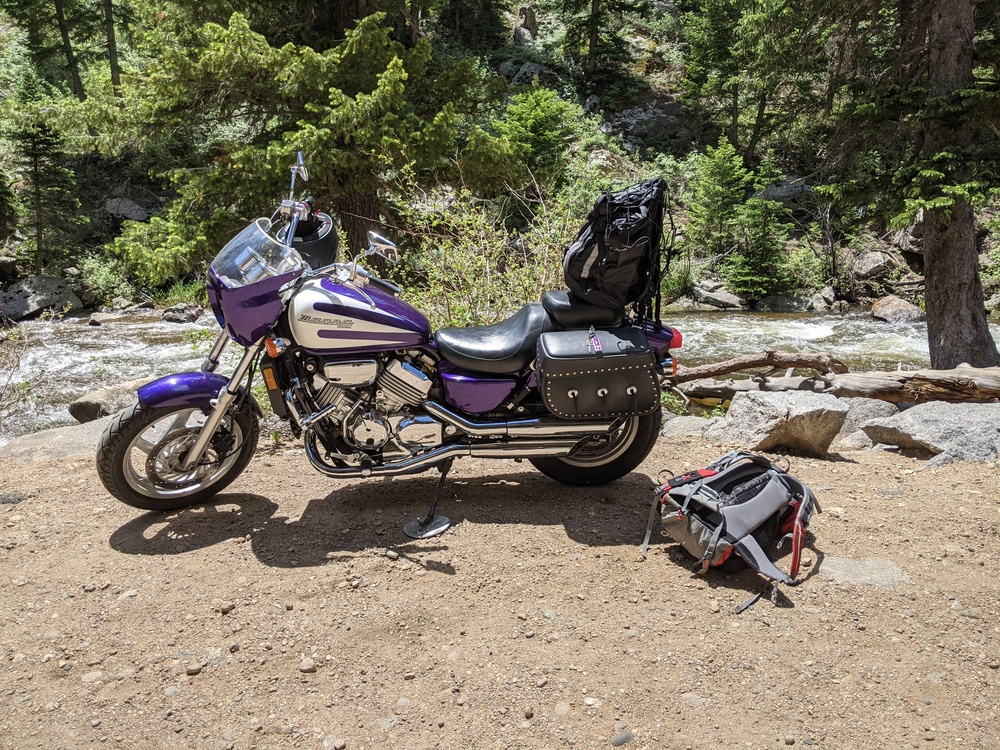Climbing from Motorcycle
|
|
Being a flat lander and having at least half the year off to wander and climb the gas bill is becoming something I cannot ignore much longer. About half of the time I check out new areas solo and then take others back to work the lines or problems, so having a bike that could fit a 40-80m, 8-16 cams, and all the other goodies would be a nice idea and change of pace. Has anyone went down this road for similar or different reasons? I really would not travel regionally to climb on a bike but only 1-4 hrs mostly for scouting or solo days. I would love to see gear org and what boxes or bags you’re using. TIA 59+ |
|
|
You need secure storage for all your riding gear when you reach your destination, that's where you transport your climbing gear. I ride a Yamaha TDM 900 but believe me riding 3hrs home in torrential rain gets old real quick! |
|
|
Jim Titt wrote: What box are you using? |
|
|
Mine are custom ones. The other solution I've used on my KTMs is a huge drybag and one of those wire mesh rucksack protectors, mine is PacSafe if I remember correctly. |
|
|
I would expect the cost of maintenance and insurance on the bikes you've listed to far offset any savings in fuel cost. If you're thinking about a motorcycle as a fun way to travel that's one thing, but the overall cost of operating any but a rather small motorcycle is at least as high as the cost of operating a car. I use a Givi 42 liter top case to hold my helmet, gloves and short boots when I'm off the bike; jacket and pants get cable locked to the bike and I cable lock a rather scruffy generic cover over the whole bike. The drybag that Jim Titt mentioned is another useful item; I also have a pair of Kriega Overlander drypacks on the side racks. I prefer soft side bags because I've been told that hard cases can cause injuries in accidents; they're also lighter and cheaper. |
|
|
I’d go with the gs 850. It can handle on and off road with many options for hard boxes that lock. |
|
|
I had dreams of doing this when I got my KLR. But honestly, it is only practical in some really niche cases, and it will almost certainly not save you money. On the practicality front - bigger bikes can handle larger loads easier. They also keep up to highway speeds better so you don't get creamed from behind, and handle crosswinds better. But smaller bikes handle dirt roads and single track easier. And they can be picked up by a rack you mount on your trailer hitch when the something goes wrong on a ride. So you can get something big and comfy for the commute which you will have to leave where the pavement ends. Or you can get something small and light which will be scary on pavement but a joy in dirt. Or you can go my route and split the difference, getting the worst of both worlds with a dual sport that is too top heavy and sluggish to really feel confident in the highway while also being too heavy to be confident off-road. Also a practicality issue is packing. Packing and unpacking on a motorcycle takes way too long. I assume more investments into proper farkles might solve this problem. But top and side cases don't really have *that* much volume, and you probably still need to find a place for a framed backpack. Remember to tuck away all your straps real good so they don't get sucked into the chain or rear wheel or melt on the exhaust!!! Packing everything in your backpack and strapping it to your passenger seat is an option, but it will make you too heavy and act as a sail once you get to any appreciable speed. But the other option is to stow away each part of your gear in side and top cases, which takes time before you leave, and then repack everything in your backpack when you arrive, and then repack I your cases again for the ride home, and then unpack immediately so your gear doesn't get stolen or rained on. You have the same problem with your riding gear. Boots, gloves, helmet, jacket, pants all need to put on before you ride. And you probably want to change before you start hiking and climbing, since your bike clothes with be heavy, clunky, non-breathable kevlar and leather. Remember to locate space in your cases for your change of clothes and approachies! Also practicality - it takes 4 limbs to operate a motorcycle. Two brakes, the clutch, and the shifter. So don't fuck up while you are out climbing - driving yourself to the hospital would be quite the journey. Also practicality - riding in the rain or cold sucks. Obviously better gear helps here, but it is what it is. You won't want to ride your bike on those 50/50 days when you feel like taking a risk on going to the crag to see what the weather does. Also practicality - it simply takes longer to get places on a bike. Theoretically, it will take the same time or be faster. But practically, you will find that - if you don't have a death wish - you will drive more conservatively on a bike than in a car, and you will avoid more dangerous or unpleasant sections of road at the expense of time. Dirt roads take longer, since you can't take turns as fast or you will slide out. Also practicality - I have yet to figure out an effective way to carry my crash pad on my bike. This is frustrating, since the solo form of climbing and the solo form of transportation seem incompatible. For cost, the numbers simply don't pan out. Say you plunk down $2000 for an ok used bike. You also need to buy riding gear and cases. You will probably want to make a few upgrades to the bike to improve it's comfort or performance. If it is light enough, you will probably want a rack to put on the back of your main vehicle to carry it if it breaks down. You will want a toolkit for in-field repairs. Thats the start up cost. Then there is gas, oil, tires, chains, blinker fluid, registration, insurance, etc. If you take your bike off pavement, you *will* drop it, so budget for replacement shifter levers, plastics, and blinker covers when they break. Now actually do the math. What is your break even point, versus just driving your car? My bet is that the timeline is measured in decades, and only if you spend even more time doing all the maintenance and repairs yourself. It simply doesn't make financial sense to try to save money with a motorcycle unless you are completely replacing your main vehicle with it. So in conclusion, motorcycles are awesome and you should totally get one. |
|
|
don't overthink it...I rode from Vietnam to Laos to Thailand and then back to Vietnam on a little 150cc Yamaha, with all my camping and climbing gear, and occasionally picking up a hitchhiker...any dual sport would do, or if you want to look retro, a Royal Enfield... P.S. I currently have a street legal DRZ400 with TUSK boxes. It's for sale in Tahoe (trying to downsize...) if you happen to be around here. I haven't listed it anywhere because I am having a hard time letting it go...but to pass it onto a fellow climber I'd be more stoked. |
|
|
I second Fan Y, don't overthink it. I road everywhere on a Honda Magna just because that was the bike I had. I'll probably sell it for a dirtbike or dual sport at some point because it is HORRIBLE off road, but it does look pretty classic parked next to all the jeeps and trucks at the off road crags. |
|
|
Brice's post pretty much sums up my experience combining my motorcycle with climbing and any other outdoor activity. I thoroughly enjoy combining some time on the bike with a day or afternoon of cragging, or scrambling around the Boulder Flatirons. But it does complicate my day, switching from moto gear to any other clothing eats up time, as does securing the moto gear, and I find myself leaving home early so I don't keep my partner standing around while I shed the moto gear. Keep in mind, too, that most motorcycles can't go nearly as far on a tank of fuel as a car. My Yamaha Tenere 700 will go 200 - 240 miles on a tank of gas. My Honda Civic will cover more like 450 - 500 miles per tank. So add a few extra fuel stops to the time required for longer journeys, especially in remote areas where you have to plan your fuel stops a little more carefully. Using the bike for 2-3 day peakbagging trips works a little better, just because I'm covering more ground on the bike and getting more riding time in. Brice's cost analysis is pretty much spot on. Motorcycle tires don't last nearly as long as car tires, but they cost nearly as much, and if you don't have the skills and tools to change your own tires, the cost to install them is at least as high. My Yamaha needs an oil change every 4000 miles; my Civic will go at least 8000 miles between oil changes. But yes, motorcycles are awesome and everyone should own one at least once. |
|
|
How much do you know about the 3 bikes you have shown, and have you ridden any of them before? Asking cuz the 850GS and 1000XR are VERY different bikes aside from similar ergonomics, and I wonder if you know that. The gas mileage of all 3 is also probably not quite what you would want to actually save money - the 850GS and 900XR maybe around mid-upper 40s, especially with side cases and loaded down with luggage and I would prepare myself for more like mid 30s on the 1000XR which is no better than most compact cars these days (not sure what you're driving currently). Only the 850 would have a range close to that of a car (but probably still less) at 250 miles or so max. I believe BMW specifies premium octane fuel for all 3 (not totally sure about the 850) which could eat into your savings even more. Unless you have it already, quality gear would likely add an additional $1k-2k. What do you drive now that a $12k-17k motorcycle with minimal if any fuel savings would have a break-even point sometime in your lifetime, especially when factoring in additional insurance and registration every year or whatever? Then there is the question - is this something you really want to do? I commute daily on a Yamaha S10 with full luggage - as far as bikes go it would be a fantastic one to take on day or weekend climbing trips. I have never done it though because the thought of riding home when exhausted from a weekend of climbing, when I'm tired, hungry and thirsty, sometimes in multiple hours of bad weather is just not something I've wanted to do and seems an extra risk that isn't worth it for me. When I want to climb, I just go climbing, and when I want to ride, I go riding but I completely separate the two. That's not to say someone couldn't enjoy the combination since I'm sure many do, but I mean it as something I've thought about a lot since I am set up well for it but decided it didn't really interest me - I think both hobbies would be less fun when combined. |
|
|
You don’t need an excuse to get a bike. And necessity is the mother of all invention. There is no perfect solution and each scenario will have its downsides. I semi-regularly ride a Monster 821 with a sack full of climbing gear a la Santa Claus on my back an hour+ up a mountain to local crags. Bikes will rarely be a practical/logical/safe choice but they are absolutely worth it in the fun department. In the wise words of Roxette, listen to your heart. |
|
|
Wouldn't this be awesome - available with 2wd. |
|
|
I haven’t done a spreadsheet on cost but I am in a situation where I climb everyday or can go out and explore everyday so I do. I burn around $70 in fuel a day. If I only go out half of the time I could that’s about $1000 a month on fuel alone. If I could ride the bike 10 of the 15 rock days I should save around $440 a month in that scenario. Insurance would eat out of that savings. Of course there is this idea of being FL and genuine novelty of the new systems. |
|
|
|
|
|
|
|
|
Hah. There was me - thinking this thread would be about Denali's West Buttress! |
|
|
I've traveled with soft side bags and wearing a backpacking bag on my back plenty of times, plus a large duffel across the back if moto-camping for a while. DR650, Vstrom, KLR, they were all fine. You could stash your riding gear in the bushes at the crag trailhead, or get expensive locking hard bags; I use a steel cable for the helmet if there's no helmet lock. Generally speaking I'd say it's not super economical but certainly fun for the right occasion and .you may not lose too much money on the bike over time as long as you don't trick it out too much. Keep the rubber side down and always dress for the crash. You won't forget the sound of asphalt on your face shield while sliding across the road. |
|
|
Buy something old and reliable. Bmw k100. Ride it. Be happy. I even rigged up a bike rack for mine so I can use it to go MTB biking. It’s fun. |
|
|
+1 for the magna! I have saddle bags but mostly put extra water in there. I have a backpack that can be secured on the backrest. I can put a 38L pack inside that pack with a rope/rack/helmet. I usually bring both because it is easier to hike with my climbing-specific pack and being able to secure the motorcycle-specific pack is nice for riding. Sometimes I just wear the backpack if it is a short drive. It does not do well off-road, but most places I go to only need limited off-road time (or if I need to go off-road I take the car). |
|
|
One of the downsides not yet mentioned is being tired after a long day of climbing and then having to gear up and attentively drive a motorcycle on the way home. I have a Triumph Tiger 800 xca and didn’t anticipate how much less fun it would be after 10 hours and 15 pitches. I’m also selling my bike, if you’re interested DM me. |

 Continue with onX Maps
Continue with onX Maps Sign in with Facebook
Sign in with Facebook




























